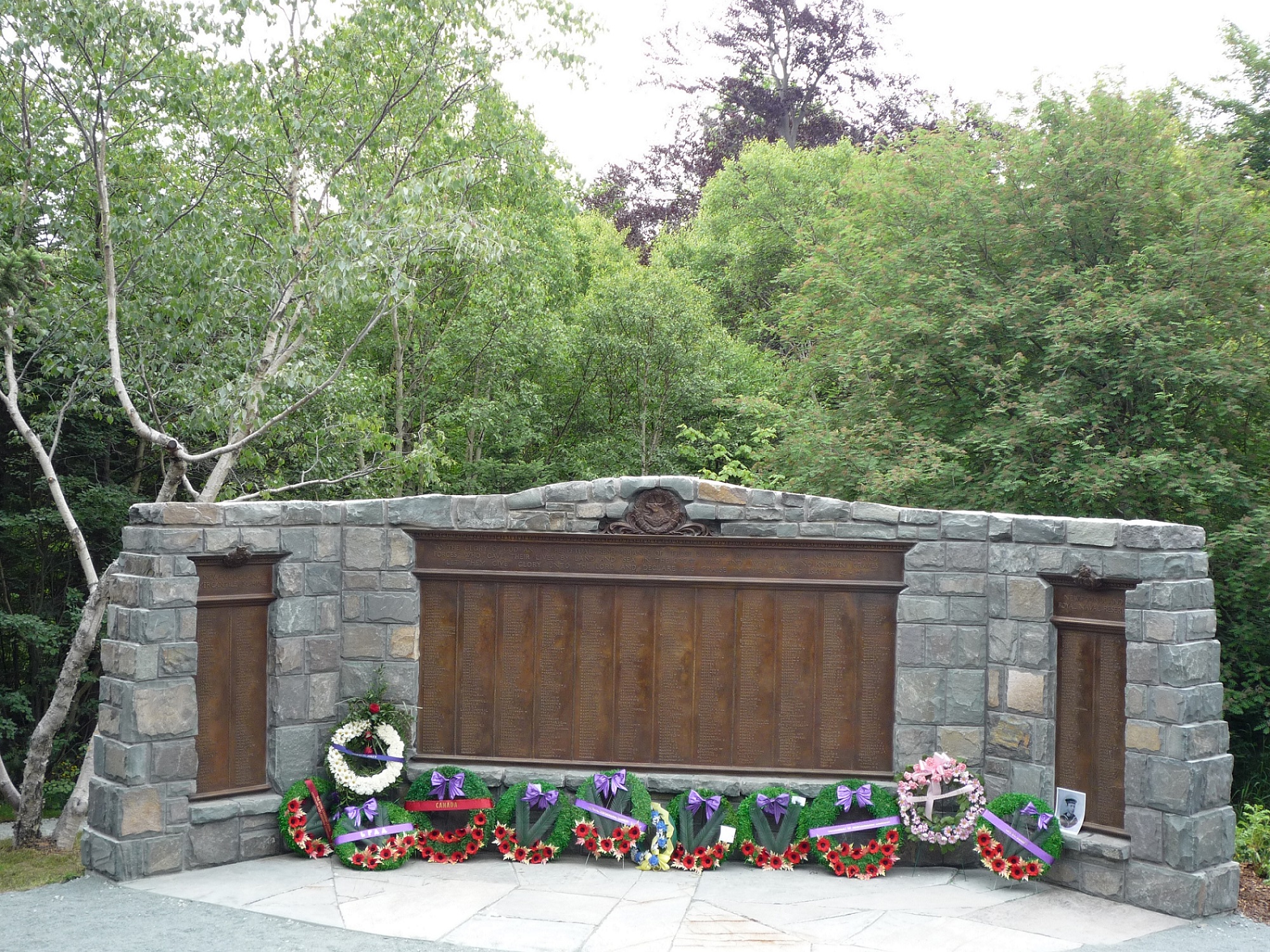needs further research/recherche incomplète
[interpretive panel/panneau d’interprétation]
Into NO MAN's Land
The first 500 volunteers who signed up for the Newfoundland Regiment at the outbreak of World War 1 expected adventures and a quick trip home. Most would never return.
The men's first battle at Gallipoli in Turkey late in 1916 was a trial by fire. Their next battle on the Somme in Northern France marked the Regiment and the nation of Newfoundland forever.
When the Battle of the Somme began on July 1, 1916 at 7:30 a.m., the Newfoundlanders were the only unit from outside the British Isles. They crouched in their trenches near the little town of Beaumont Hamel — awaiting their orders. The call came at 9:15 am and 801 young Newfoundlanders headed out into enemy machine gun fire. It was over in 30 minutes. 68 men answered roll call the next morning. Newfoundland's Prime Minister was told that the assault failed only because "dead men can advance no further".
A Lost Generation
57,000 other British soldiers were killed and wounded on July 1st, 1916, but losing so many young men had a huge impact on a country as small as Newfoundland. Raising the Regiment was the nation's first great effort as a people. July 1st became Newfoundland's Memorial Day - the forget-me-not was worn as a sign of remembrance.
The Caribou — the emblem of the Newfoundland Regiment. Days after the Regiment was devastated at Beaumont Hamel, the Corps commander told his soldiers that they were "better than the best". This remains the Regiment's proud motto.
Aged only 16, Private William Morgan of St. John's, was one of many killed in action at Beaumont Hamel on July 1st, 1916. Down this path, you'll find his name among those on the plaques commemorating men with no known graves.
[interpretive panel/panneau d’interprétation]
Tread softly here —
Go reverently and slow,
Yea, let your soul go down upon its knees,
And with bowed head and heart abased
Strive hard to grasp the future gain in this sore loss.
For not one foot of this dank sod
But drank its surfeit of the blood of gallant men
Who for their Faith, their Hope, for Life and Liberty
Here made the sacrifice.
Here gave their lives, and right willingly for you and me.
Epitaph at the Beaumont-Hamel Memorial, composed by John Oxenham.
Beaumont Hamel Park opened in 1925. It is the largest of Newfoundland's memorial sites in Europe. Landscape architect RHK Cochius' vision made this the only place on the Somme where the trenches and battlefield were preserved. Today, the sits is managed by Veterans Affairs Canada and draws over 250,000 visitors every year.
Forget∼Me∼Not
After the terrible losses at Beaumont Hamel, the Newfoundland Regiment rebuilt with volunteers and fought on. 1,201 members of the Regiment died in World War I - a small portion of the one million British Empire soldiers killed.
1n 1917, King George V granted the Newfoundland Regiment the title of "Royal" — a wartime honour given to only two other regiments in the history of the British Army.
Four years of devastating war. Thousands of sons and husbands buried in the mud on a far off continent and lost at sea. The memorial effort began soon after the war ended in 1918. Thomas Nangle, the Regimental Padre, recommended memorials to mark each of the Regiment's main battles: Gallipoli, Beaumont Hamel, Gueudecourt, Monchy-le-Preux, Masnières and Courtrai. Five caribous still stand watch over the battlefields in Europe where so many fell.
Down this path you'll find a sixth caribou and the 820 names of Newfoundland soldiers, seamen, and sailors whose final resting places are 'known only to God". These plaques are replicas of the ones unveiled at Beaumont Hamel in 1925.
Lt. Col. Thomas Nangle, the Royal Newfoundland Regiment's Padre in France during the War, was the Dominion of Newfoundland's representative in the Imperial War Graves Commission. He headed up the memorial effort in Europe.
